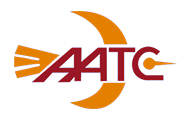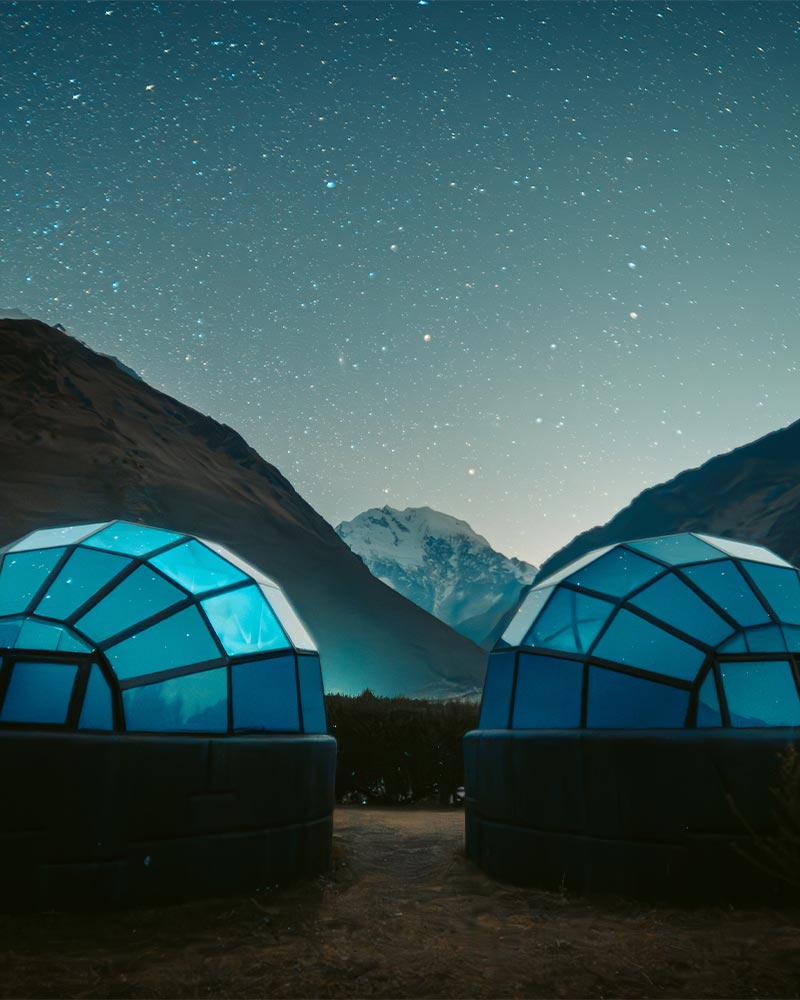The Inca Trail is one of the most popular trekking routes in the world and definitely the most sought-after in Peru. Perhaps you've already reserved your spot or still have doubts.
Whatever the case, you probably have many questions about the hike and how to plan the perfect trip. Don't worry! We've compiled the inquiries we receive from our hikers to create the definitive list of frequently asked questions about the Inca Trail.
We hope you can find the answer you're looking for on this page about the Inca Trail and travel information in Peru.
The Inca Trail is one of the most popular trekking routes in the world and definitely the most sought-after in Peru. Perhaps you've already reserved your spot or still have doubts.
Whatever the case, you probably have many questions about the hike and how to plan the perfect trip. Don't worry! We've compiled the inquiries we receive from our hikers to create the definitive list of frequently asked questions about the Inca Trail.
We hope you can find the answer you're looking for on this page about the Inca Trail and travel information in Peru.
Frequent Questions
Here is a list of the frequently asked questions of our passengers
-
Is the Inca Trail Worth It?
Without a doubt, the Inca Trail is an experience that's worth 100%. Recognized by National Geographic and other sources as one of the best hikes in the world, this route offers you the opportunity to:
- Explore ancient and mystical paths.
- Visit archaeological sites that you can only witness on this journey.
- Learn about the fascinating Inca culture.
- Walk through the most breathtaking landscapes of the Andes Mountains.
- Discover unique and diverse flora and fauna.
- Rest in the arms of Mother Nature amidst the Andes.
- Enter Machu Picchu through the Sun Gate or Intipunku (exclusive to this route).
- Explore one of the New Seven Wonders of the World, Machu Picchu.
-
Is the Inca Trail Difficult?
Salkantay Trekking rates the Inca Trail as a moderately to highly difficult route. This is due to the uneven terrain, challenging ascents, and high altitudes in some sections. However, other parts are not as demanding, which is why it is considered moderate.
-
Does the Inca Trail include a visit to Machu Picchu?
Of course! A visit to Machu Picchu is definitely included in our itinerary. In fact, through the Inca Trail, you'll reach Machu Picchu via the Inti Punku (Sun Gate), something that is only possible on this route. You’ll witness a privileged view of this wonder of the world.
Machu Picchu will reward you for all the effort you put into your adventure and offer you the chance to enjoy an impressive panoramic view. Afterward, you'll take a guided tour through the most important sites of the citadel.
-
Is the Inca Trail open year-round?
Unfortunately, the Inca Trail is not open throughout the year. It remains closed during February for maintenance and conservation purposes. Therefore, planning your visit while considering this restriction is crucial, ensuring you can experience this unique journey in the available months.
-
How far in advance should I book the Inca Trail?
We recommend booking your Inca Trail ticket as far in advance as possible. It’s best to book at least 3 months in advance for the low season (November to April) and 6 months in advance for the high season (May to October).
Note: Even if you book before these suggested periods, we cannot guarantee your spot on the route, as it's uncertain exactly when availability will run out. Book as soon as possible.
-
Do I have to carry my luggage on the Inca Trail?
You won’t need to carry all your luggage with you, but you will need a daypack to bring the essentials you’ll need during the day: water, snacks, sunscreen, rain poncho, insect repellent, etc.
We will provide you with a duffle bag where you can store the rest of your belongings. We have an excellent team of porters who will carry it for you, and you’ll have access to these items upon arriving at the campsite.
*NOTE: Please remember that the duffle bag has a weight limit of 7 kg / 15.4 lb.
-
Why are there porters on the Inca Trail?
Porters play a crucial role on the Inca Trail as they are the only ones authorized to carry belongings and equipment to the campsites.
They are the last to depart and the first to arrive at the campsites. Carrying considerable loads on their shoulders along steep and challenging trails enables visitors to enjoy the hike without adding extra burden to their backs. Porters are not just brave workers but also local experts who contribute their knowledge of the route, share stories, and provide logistical support.
-
How many Inca Trail Routes are there?
Among the main Inca Trail routes, we have the following:
- The Salkantay & Inca Trail (7 Days)
- Salkantay & Short Inca Trail (6 Days)
- The Classic Inca Trail (4 Days)
- Short Inca Trail (2 Days)
- The One Day Inca Trail (1 Day)
Other options combine alternative routes with the Short Inca Trail:
- Lares Trek and Short Inca Trail (5 days)
- Ancascocha Trek and Short Inca Trail (5 days)
-
Where does the Inca Trail end?
The final stretch of the Inca Trail ends at the archaeological site known as Inti Punku, which means “Sun Gate” in Quechua, the ancient language of the Incas. This site is an integral part of the Machu Picchu Archaeological Park and was the original entrance to the citadel, serving as the only access point during the Inca Empire.
-
At what altitude is the Inca Trail located? Should I be concerned about altitude sickness?
The Inca Trail, in general, does not take place at extremely high altitudes, although it does include some high-elevation sections. The highest point on the route is at 4,200 m.a.s.l. (13,780 ft), while the highest campsite where you’ll spend the night is at 3,600 m.a.s.l. (11,811 ft). The reaction to altitude sickness can vary depending on your physical condition and preparation, so we always recommend training before the trek.
Most hikers do not experience significant problems; however, it is recommended to take 2 to 3 days of rest in Cusco to properly acclimate.
-
How can I prepare physically for the hike?
The Inca Trail is moderately demanding and takes you to high altitudes. The ascent to the Dead Woman's Pass (4,200 meters / 13,780 feet) is the most challenging part of the trail. On this day, you will also walk approximately 16 km (10 mi) for around 10 hours. In addition, along the way you’ll encounter many steps and slopes that will challenge you.
For this reason, we suggest having good physical preparation to enjoy the excursion and avoid difficulties during the journey fully. Consider these preparation tips for the Inca Trail:
- Do cardiovascular exercise while you're at home. Include walks, preferably on hilly and inclined terrain.
- Incorporate strength training to build your muscles and prevent joint pain.
- Maintain a balanced diet to provide your body with all the nutrients and energy it needs. While you're on the trail, we will provide you with nutritious meals.
- Make sure to arrive in Cusco 2 or 3 days before starting your excursion to acclimate better. Otherwise, you're at a higher risk of experiencing altitude sickness, which could disrupt your hike.
- Physical preparation is exactly that, but you should also have hiking boots with good traction that are already broken in. New ones can cause blisters and a lot of pain.
-
How many people are allowed on the Inca Trail each day?
Only 500 people are allowed to enter the Inca Trail per day, including tourism agency staff: guides, cooks, and porters. This leaves around 200 spots available for tourists each day.
As one of the most famous hikes in the world, many people want to experience this route during their trip to Peru. The Peruvian Government aims to preserve the trail as much as possible and has established a limit on the number of hikers allowed per day. Additionally, access is only permitted through an authorized agency; entering on your own is not allowed.
*Remember that in February, the Inca Trail is closed for cleaning and maintenance work.
-
How many people will be in my group?
At Salkantay Trekking, the maximum number of people in our hiking groups is 16. Nevertheless, we can proceed with a minimum of 2 participants. Generally, this depends on the time of the year and the season.
-
How far do we walk each day?
On average, you’ll walk around 6 or 7 hours a day along the Classic Inca Trail. If you want to take a closer look at each day in detail, you can check out the itinerary on the Salkantay Trekking website. Below is a quick overview of the distance you’ll cover each day:
- DAY 1: 14 km / 8.7 mi
- DAY 2: 16 km / 9.94 mi
- DAY 3: 9 km / 5.59 mi
- DAY 4: 5 km / 3.11 mi
-
Where will we sleep on the Inca Trail?
During the Inca Trail journey, we will come across designated areas for our camping nights. We have carefully chosen and reserved these spaces to ensure your comfort.
Our team carries and sets up everything needed so that upon arrival at these points, everything is ready for you to rest. Each of these locations is unique and blends beautifully with the surrounding nature. Your only concern will be your personal belongings.
-
What about sleeping bags?
We recommend opting for a compact sleeping bag suitable for three-season climates. Alternatively, you can rent one from us. These sleeping bags are hygienic and warm for a comfortable night's sleep.
*It's important to note that sleeping bags are NOT included in the package, except in our Private Inca Trail to Machu Picchu Tour.
-
How much does the Inca Trail cost?
The cost of the Inca Trail can vary depending on the agency you choose. At Salkantay Trekking, we offer 8 options for experiencing the Inca Trail. The prices per person for a group trip are as follows:
- ONE DAY INCA TRAIL — USD$495
- SHORT INCA TRAIL 2 DAYS — USD$595
- CLASSIC INCA TRAIL 4 DAYS — USD$870
- PRIVATE INCA TRAIL 4 DAYS — USD$1600
- SALKANTAY AND SHORT INCA TRAIL 6 DAYS — USD$1095
- SALKANTAY AND INCA TRAIL 7 DAYS — USD$1250
- LARES TREK & SHORT INCA TRAIL 5 DAYS — USD$795
- ANCASCOCHA TREK & SHORT INCA TRAIL 5 DAYS — USD$995
-
Can I Rent Equipment for the Inca Trail?
On all our routes, we provide accommodation—in this case, tents and a sleeping pad. If you need to rent additional camping equipment, we have some items available.
All the equipment we use is top quality and from the best brands. You can rent them in advance or during the briefing session:
- A sleeping bag for -15°C and a sleeping bag liner.
- Trekking poles.
*If you already have these items, you can bring them on the trip. Just keep in mind the weight limit for your belongings (7 kg / 15.4 lb).
-
Is water included in the trip?
Yes, water is included. You'll need to carry water for the first day, but after that, we will provide water with every meal. The water we provide is clean and safe to consume.
We recommend bringing a refillable bottle or a Camelbak. Plastic bottles are not a good idea as they can harm the environment, and we believe in sustainable tourism.
-
What is the food like during the hike?
Food on the Inca Trail is often one of the highlights of the journey for many hikers. At Salkantay Trekking, each and every one of our cooks is professionally trained and does an amazing job preparing delicious meals in the middle of the mountains.
We know that proper nutrition is extremely important during the trek, as it involves a great physical effort and requires a lot of energy. That’s why we’ve worked closely with trained cooks and expert nutritionists to design the most complete and balanced menu for the Inca Trail.
At every meal, you’ll find a variety of dishes so you can choose what you prefer. We use fresh, native ingredients to prepare traditional meals that will surprise you. In addition, we adapt the menu to your needs, offering vegan, vegetarian, gluten-free, or dairy-free options.
You definitely won’t go hungry when you join Salkantay Trekking on the Inca Trail.
-
Do I need to bring extra money for the hike?
Yes. We always recommend bringing extra money in case of an emergency. For example, you’ll need it in Aguas Calientes, the town at the foot of Machu Picchu, if you want to buy a souvenir. It will also be useful for enjoying the Cocalmayo hot springs or paying for your last lunch before returning to Cusco.
-
Do I need a permit for the Inca Trail?
Yes. To hike the Inca Trail, it is mandatory to have a special permit, which must be obtained through an authorized agency, as entering on your own is not allowed.
Keep in mind that this permit must be booked well in advance, as only 500 spaces are available per day, including both tourists and support staff (guides, cooks, and porters). Spots sell out quickly, so we recommend planning your trip several months ahead.
-
Can I do the trek with children?
Yes, it's possible to enjoy the Inca Trail with your children. We recommend they are at least 8 years old and in excellent physical condition.
However, we don't recommend traveling with children who aren't accustomed to regular hikes and a lot of physical exertion.
-
Will I have WiFi during the trek?
No, you won't have WiFi available along the Inca Trail. You'll only have internet access if you visit a restaurant with WiFi in Aguas Calientes when you return from Machu Picchu.
-
Can I charge my devices during the Trek?
No, there are no places to charge your electronic devices along the Inca Trail. We recommend bringing a portable charger (Power Bank) to keep your camera or phone battery charged so you can take incredible photos.
-
Will I have access to bathrooms along the hike?
Yes, Salkantay Trekking provides portable toilets along the trail, and you'll also find simple and rustic bathrooms at the campsites. Make sure to carry toilet paper in case it's not available.
-
Can I shower during the trek?
Yes, although only on limited occasions. On the third day’s campsite, there are showers available, but they are basic and limited, with no hot water. Additionally, in some cases, the water supply is not guaranteed throughout the day. For this reason, we ask you to keep this in mind and understand that showers are not 100% guaranteed on this trek.
*We recommend bringing wet wipes for the other days so you can stay fresh during the hike.
-
Can I rent horses during the hike?
No, there's no option to rent horses along the Inca Trail.
-
What's the difference between the 1, 2, 4, and 7-day Inca Trails?
As you’ve seen, there are 4 different versions of the Inca Trail available:
- 1-Day Inca Trail: On this excursion, you'll pass through the impressive archaeological site of Wiñay Wayna and reach Machu Picchu through the Sun Gate. After your visit, you’ll return to Cusco the same day.
- 2-Day Inca Trail: On this trek, you'll hike part of the Inca Trail, passing through the Sun Gate (Inti Punku) and spending the night in Aguas Calientes. The next day, you’ll visit the Machu Picchu citadel at a more relaxed pace. This option lets you experience Machu Picchu on two different occasions.
- 4-Day Inca Trail: This is the classic option and the most popular among hikers. You'll walk the original Inca Trail and camp at different sites each night. You'll visit several archaeological sites and enter Machu Picchu through the Sun Gate.
- 7-Day Inca Trail: This route combines the best of the Salkantay Trek with the Inca Trail. You’ll explore various archaeological sites and enter Machu Picchu via the Sun Gate (Inti Punku). The first night, you'll stay at our exclusive Sky Camp with breathtaking views of the Andes, and you'll camp in a unique natural setting. A 6-day version is also available.
-
What is the difference between the Classic Salkantay Trek and the Classic Inca Trail?
Aspect Classic Salkantay Trek Classic Inca Trail Route Variety of landscapes, including mountains and jungle. Historic trail with archaeological sites Duration 5-day hike 4-day hike Challenge level Moderate to challenging Moderate to challenging Access Fewer reserve restrictions Reservation and permit restrictions Archaeological Sites Some, but fewer in comparison Several emblematic sites along the route Availability More flexible in terms of availability Reservations required *Please note that both options offer unique and enriching experiences. The choice between them will depend on your preferences, desired level of challenge, and availability.
-
What is the best time of the year to do the Inca Trail?
The best time of year to hike the Inca Trail is in April, May, September, and October. These months are close to the rainy season, but rain is infrequent, making the weather more stable. You’ll enjoy pleasant temperatures, fewer crowds, and spectacular views of Machu Picchu.
-
What will the weather be like on the Inca Trail?
The weather on the Inca Trail can be very variable and unpredictable, as it crosses areas of high jungle with a tropical climate. Although there are two main seasons—the dry season and the rainy season—it’s difficult to know exactly what conditions you’ll encounter during the trek.
In the higher zones, especially on the first night, temperatures can be quite cold, so you’ll need warm clothing. As you descend toward Machu Picchu, the weather becomes warmer and more humid due to the lower altitude.
The rainy season in Peru runs from late October to April, but even during the dry season, rain is possible. That’s why we always recommend bringing a waterproof jacket or a rain poncho.
*If you’re deciding when to travel, we invite you to check out our ultimate guide on Inca Trail weather.
-
Is it possible to ascend to Huayna Picchu mountain after completing the Inca Trail?
Yes, it is possible to hike to the top of Huayna Picchu Mountain at the end of the Inca Trail. Once inside Machu Picchu, you can climb Huayna Picchu or the other mountains as long as you have the corresponding ticket and enough time. It’s important to note that access to this mountain is limited and must be booked at least three to four months in advance.
*Read our blog about the mountains of Machu Picchu to plan your visit properly.
-
Are there alternative routes to the Inca Trail?
In case there's no availability for the Inca Trail, there are several alternatives you can consider:
- Salkantay Trek: This route starts by exploring the Humantay Lake and the Salkantay Mountain. Over 5 days, you'll cross valleys, ravines, and breathtaking landscapes of the Andes and cloud forest until reaching Machu Picchu.
- Inca Jungle: An adrenaline-filled adventure that combines hiking with biking, rafting, and ziplining through the Andes and the Cusco jungle. It includes a stop at the Cocalmayo hot springs—perfect for relaxing before reaching Machu Picchu.
- Inca Quarry Trek: Hike through the ancient quarries where the Incas extracted stones for their constructions. You'll visit a waterfall, the archaeological site of Racaypata, and reach the Sun Gate (Inti Punku), with amazing views of Mount Veronica.
- Lares Trek: A less crowded route that passes through Andean communities and natural hot springs. It offers an authentic experience, ideal for those seeking unique landscapes and cultural encounters away from the crowds.
- Ancascocha Trail: A challenging and remote hike that crosses mountains, lagoons, and high-altitude passes with breathtaking views. Perfect for those looking for an off-the-beaten-path experience.
- Choquequirao Trek: It doesn’t end at Machu Picchu, but leads to its sister city—the Inca citadel of Choquequirao. The classic trek takes 5 days and combines archaeology, nature, and a demanding journey through the Andes.
*These alternatives offer different routes and experiences for those who want to explore the majesty of the region, even if Inca Trail permits are sold out.
-
What measures are taken in case of emergency or need for medical assistance during the Inca Trail?
At each campsite along the Inca Trail, park rangers and satellite phones are stationed to respond to emergencies. In addition, our guides are highly trained in first aid and emergency protocols. They carry a comprehensive first aid kit and, if necessary, have oxygen bottles to provide immediate assistance.
It's worth noting that the Inca Trail is frequented regularly, and incidents are sporadic.
However, porters are prepared to transport anyone quickly in emergencies while providing necessary medical care.
-
Is it possible to leave the Inca Trail and return to the city?
Our guides are highly trained to handle various situations, from altitude discomfort and fatigue to falls, bumps, and sprains. Their main goal is to ensure that you can complete your journey smoothly.
If you decide to interrupt your trek, our guides will coordinate your safe return. Your well-being and comfort are our priority, and we will do everything possible to facilitate any needs that arise during your Inca Trail experience.
-
Can I join as an independent hiker?
Yes, you can, but only if we already have a reserved Inca Trail group for that day. This is because we require a minimum of two people to open a group tour.
Find the Perfect Destination in Peru
With astonishingly varied landscapes, stunning scenery, compelling history, and a legacy of fascinating cultures, there is truly something for everyone. Our expeditions in Peru are designed to showcase all that this country has to offer.
Our expeditions in Peru are designed to showcase all that this country has to offer.












